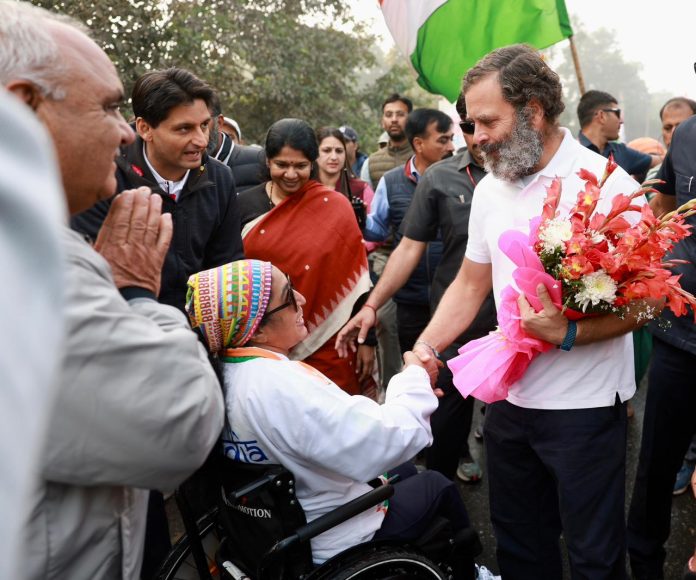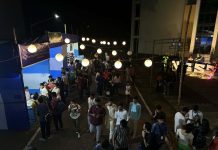The Congress Party’s Bharat Jodo Yatra, having completed 100 days is currently on a 9-day break in Delhi. Meanwhile, it seems logical to measure its impact, if any, on the electorally emaciated and organizationally beleaguered Indian National Congress.
The yatra, which spans 12 states and over 3500 kilometers, began on September 7 in Kanyakumari is slated to end in Srinagar on the 74th Republic Day of India. The cross-country march, the party’s greatest nationwide mass mobilization in decades, has been hailed an “emphatic success” by party leaders. But its final verdict will be determined not by the political elite inhabiting the corridors of New Delhi, but by the often neglected, perennially sidelined class referred to as ‘aam aadmi’.
As stated on the Yatra’s website, it has been conducted in pursuance of achieving lofty ambitions, such as addressing problems like widespread unemployment and inflation, the politics of hatred and division, and the elevated centralization of our governmental system. The yatra’s ability to counteract the party’s own history of anti-democratic credentials remains to be seen.
In the course of 100-odd days, the Yatra and its chief architect, Mr. Rahul Gandhi have drawn praise and criticism alike. Certain issues have been addressed while some steadfastly ignored. But the primary goal seems to be a perception overhaul when it comes to Gandhi. In photos from the yatra, he can be seen tenderly hugging old ladies, fondly holding youngsters in his lap and demonstrating football abilities — essentially, a kind, and warm-hearted person, a model of physical fitness and well-being.
A refreshing change from the pot-bellied, geriatric politicians unable to walk a kilometer a day let alone twenty-five. Dubbed the ‘marathon man’ by his party workers and some sections of the media, one wonders if the Yatra should be titled the Rahul 2.0 yatra instead.
While journeying through different parts of India, he has spoken at half a dozen press conferences, been interviewed by a handful of YouTubers, and interviewed former Reserve Bank of India governor Raghuram Rajan about the challenges plaguing the country’s economy. Issues such as inflation, the rise in unemployment, and the breakdown of the banking system have been highlighted at various points. The government has been attacked over failure to discuss these issues in Parliament, skirting its responsibility towards the common man and instead propagating communal rhetoric to divert attention from the ailing economy.
He has endeavored to frame a new charter for political participation, dissociated from immediate electoral gains, through his speeches and meetings with varying sections of society. His message of cooperation and unity is as inspiring as it is innocently utopian, especially in the face of polarizing rhetoric often seen as the quickest path to electoral success. Mr. Gandhi has attempted to draw a contrast between the present iteration of Hindutva and its own original form and meaning, by paying homage to former BJP prime minister Atal Bihari Vajpayee.
Mazdoor Kisan Shakti Sangathan activist Nikhil Dey stated, “This Yatra has created a bigger platform for interaction, for wider democratic consultation. People are not mobilized for lecturing by politicians; they (Congress leaders) are listening, resulting in unprecedented accessibility.”
With eminent personalities such as former RBI governor Raghuram Rajan, M.K. Gandhi’s grandson Tushar Gandhi and superstar turned politician Kamal Hassan joining the Yatra at various junctures, there is no shortage of media coverage and publicity associated with the Yatra. More importantly, it seems to have received a thumbs up from over 200 civil society members including Yogendra Yadav, Anjali Bharadwaj, and former IAS officers Abhijit Sengupta and Sujata Rao. They underlined that people’s movements have a consistent record of protesting and resisting the unjust acts of any government, defending the fabric of our constitutional republic.
Additionally, the Bharat Jodo Yatra appears to be an effort to address and resolve problems of factionalism in states such as Kerela and Rajasthan, to energize the Congress’ organizational apparatus, and to mobilize a sizable number of workers. After successive defeats in several state elections and losing its core voter base to both the BJP and regional parties, Rahul Gandhi has time and again acknowledged his own flaws, the primary one being inaccessibility, exacerbated by factionalism and an inter-generational tussle within the Grand Old Party.
The challenge, however, lies in finding a remedy rather than in identifying the cause of Congress’s illness. In actuality, the remedy is also known. The question is how to do it. Fixing the underlying causes of Congress’s health problems is the problem, in managerial words. The Party is notorious for frequently using bandages as fixes. Even while the Yatra has piqued the public’s interest and generated sympathy for the party, the main issue at hand must be addressed.
Will the Bharat Jodo Yatra revive the Congress party’s electoral fortunes? Despite repeated claims to the contrary, the Yatra is political in nature, its ultimate goal is to resurrect the Congress’ electoral chances. A mathematical and scientific method factors into winning elections, in addition to appealing to the emotional sentiments of people. The BJP has cracked this code. By refusing to acknowledge the Yatra as a means to secure electoral gains, and by refusing to pit himself as the natural opponent to the Prime Minister, Rahul Gandhi is making a tactical error of serious proportions. A balance between ideological purity and pragmatic policies aimed at addressing the issues of the electorate is what the Yatra should be about.
































